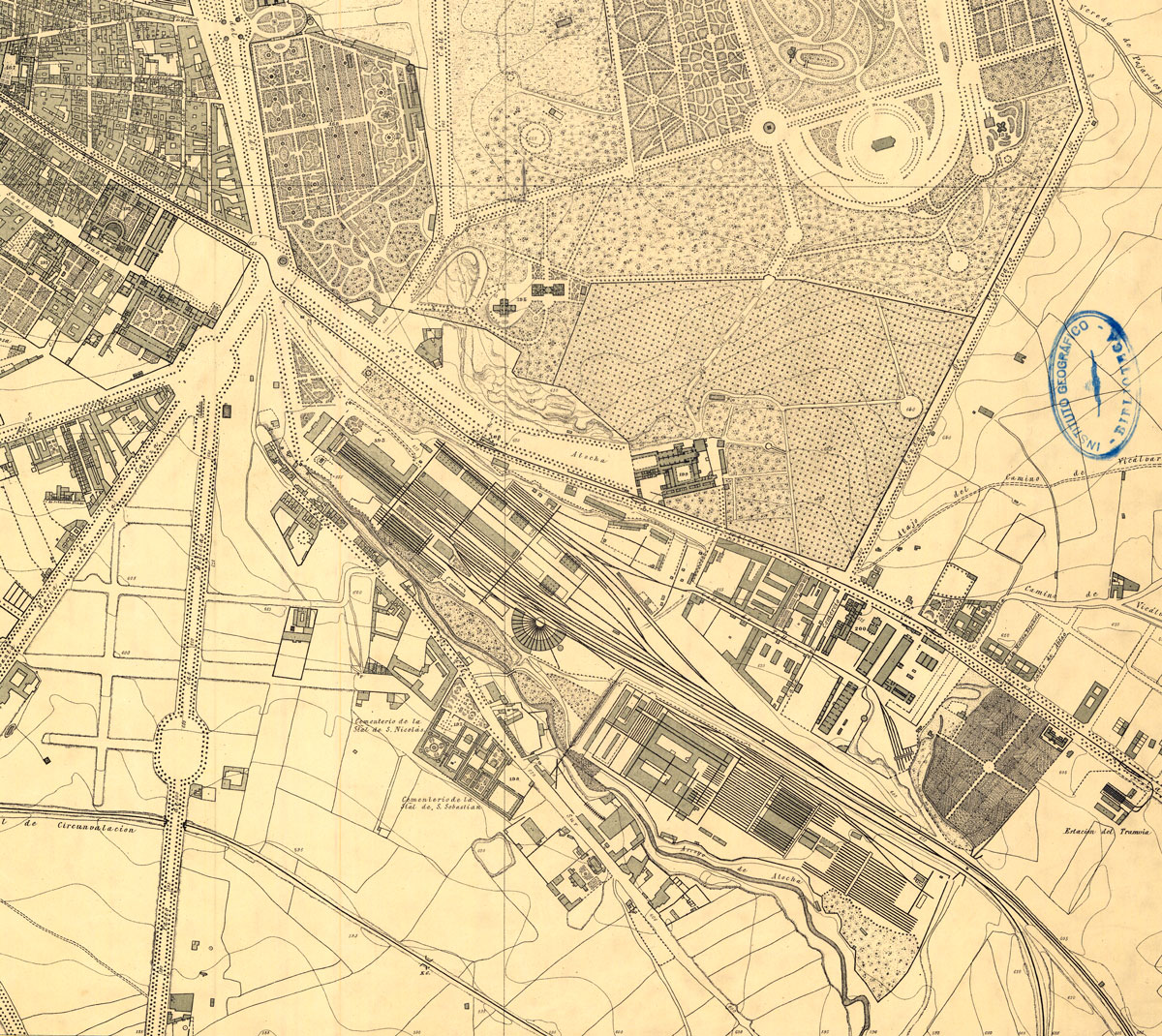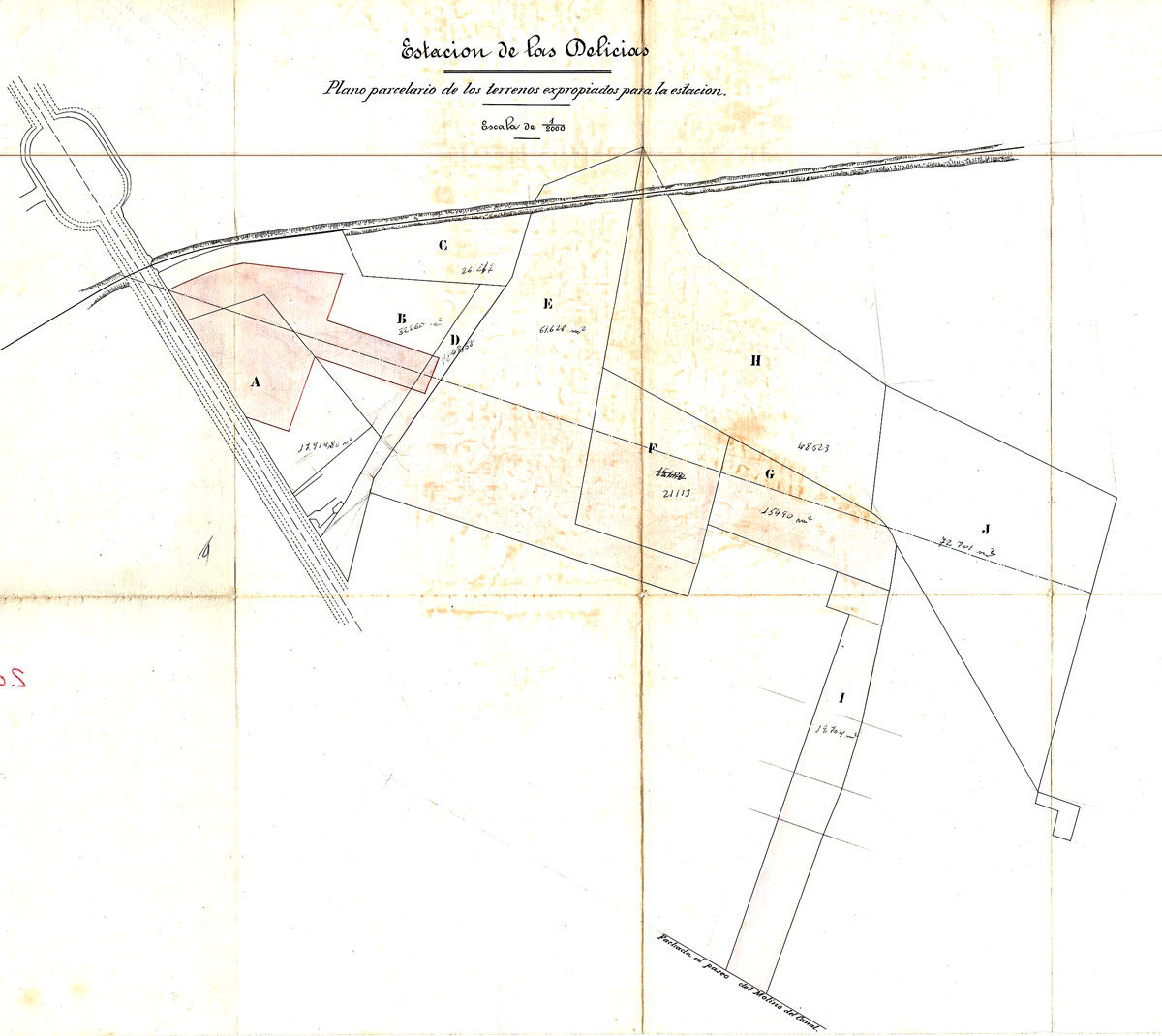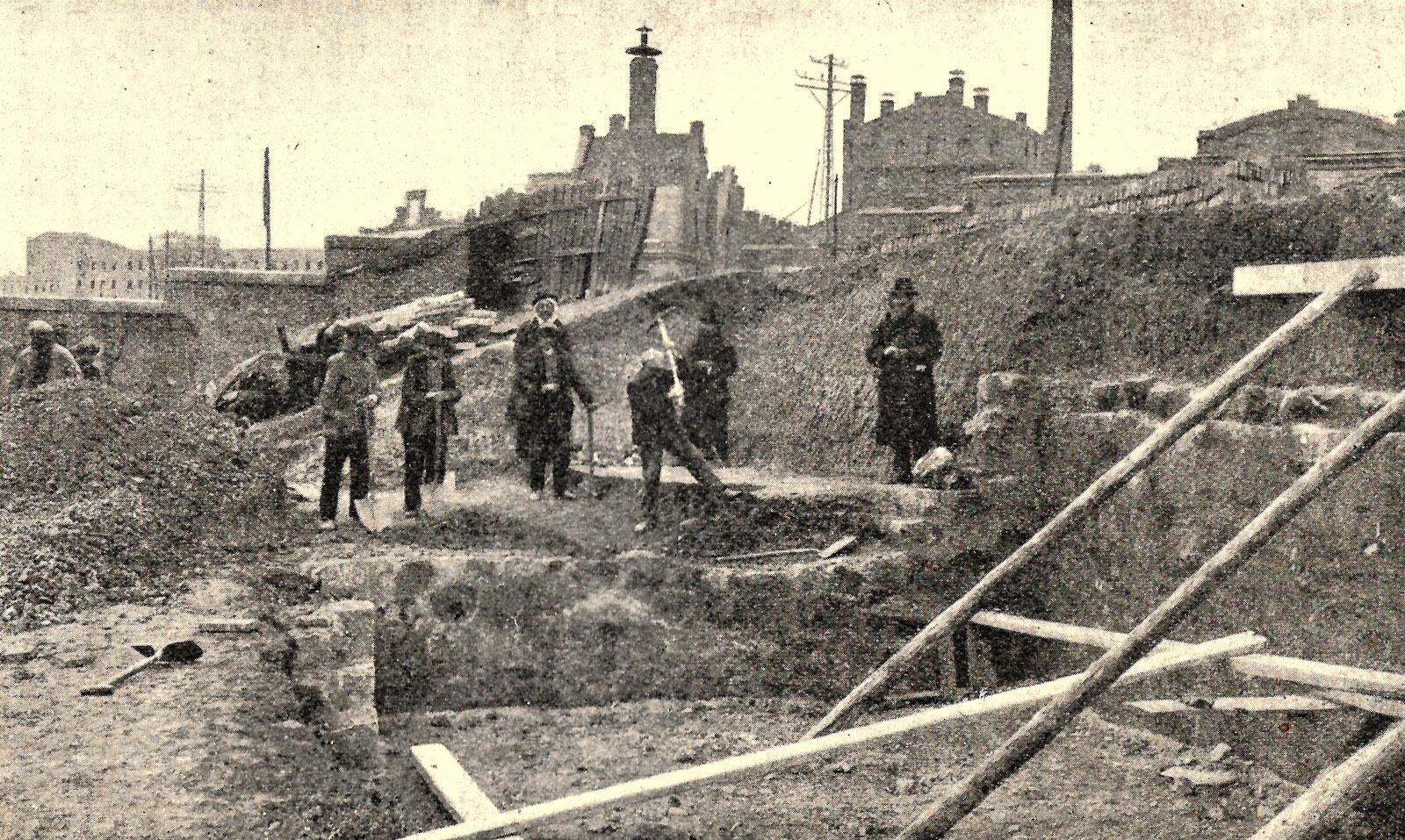A location in the city outskirts
he new Delicias railway
facility joined the two provisional stations that already
existed in the capital in the last third of the 19th century,
Atocha and Norte in Príncipe Pío. Madrid, thanks to the two main
railway companies, Compañía de los Ferrocarriles de Madrid a
Zaragoza y Alicante (MZA) and Compañía de los Caminos de Hierro
del Norte de España (Norte), was connected by train with most
provincial capitals and with France. However, some railway lines
still had to be completed, and more companies would join the
existing railway concession, such as the direct line between
Madrid and Ciudad Real, which was opened on February 3, 1879,
and the one that would connect, just two years later, Madrid
with Lisbon via Malpartida de Plasencia, Cáceres and Valencia de
Alcántara.
The land occupied by the Madrid-Delicias railway facility began
to be acquired when the Act of December 15, 1876, awarded
Compañía de los Ferrocarriles de Ciudad Real a Badajoz y de
Almorchón a las Minas de Carbón de Belmez (CRB) the construction
and operation of a direct line between Madrid and Ciudad Real.
The company that built the line between Madrid and Malpartida de
Plasencia also participated, in those years, in the process of
obtaining land.
Both companies used their capital to expropriate land located in
the outskirts of Puerta de Atocha, near Paseo de las Delicias,
within the capital’s urban expansion area and to the south of
the railway ring belonging to the Norte company, which had been
operating since 1864. The largest estates, called “La Moñina”
and “El Jardinillo,” were divided between the two companies in
order to build their respective stations there, while some land
was shared for operating the railway. In the end, only one
terminal was erected, that of Delicias, which was designed in
1878 for the CRB company’s direct railway line between Madrid
and Ciudad Real.
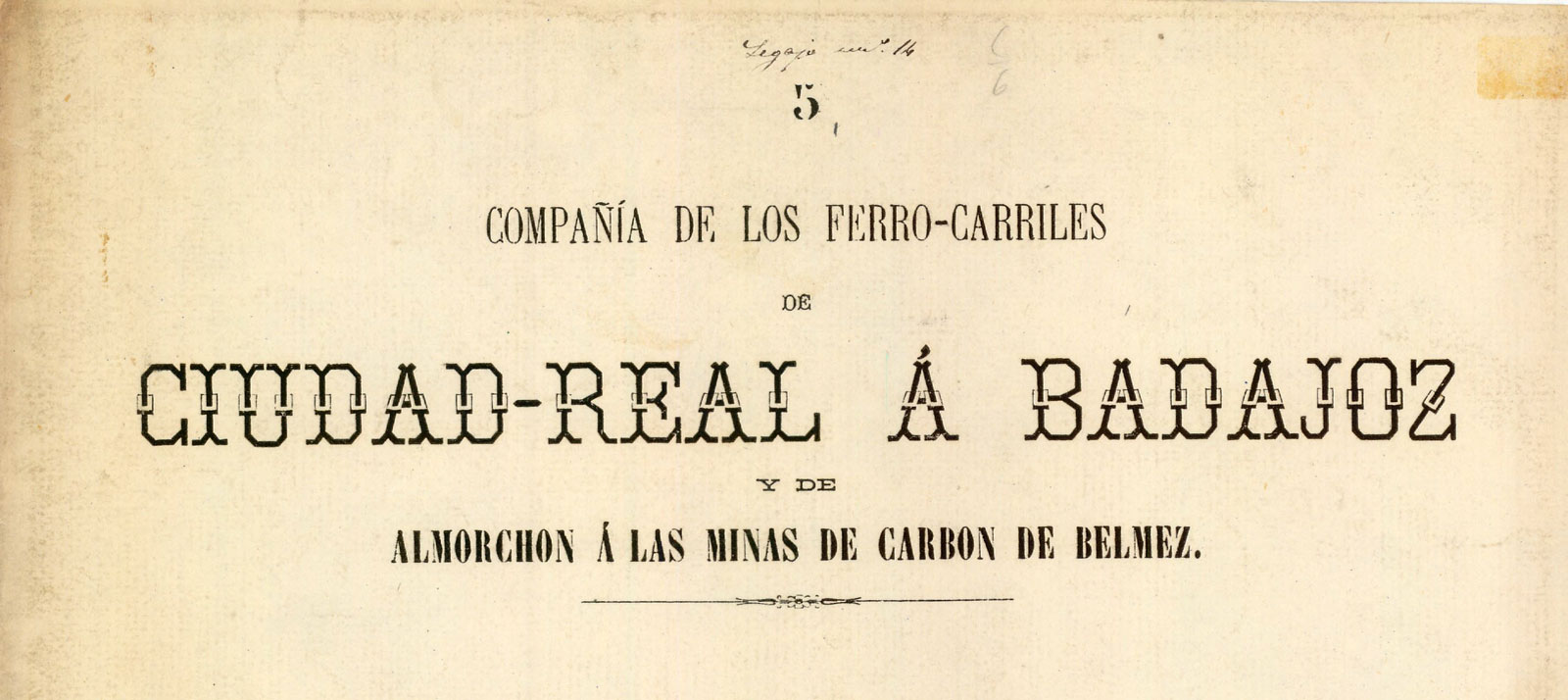
Madrid to Ciudad Real direct railway line project cover´s detail. Madrid station. 12-Oct-1878. AHF-MFM
Nevertheless, humans had populated this area long before the railway arrived. Later building work within the railway facility uncovered a Palaeolithic site, in the Manzanares Valley, featuring Solutrean industry. Discovered by the railway engineer Alejandro Guinea Unzaga, the archaeological site was made known at the end of 1917 by Hugo Obermaier and Paul Wernert.
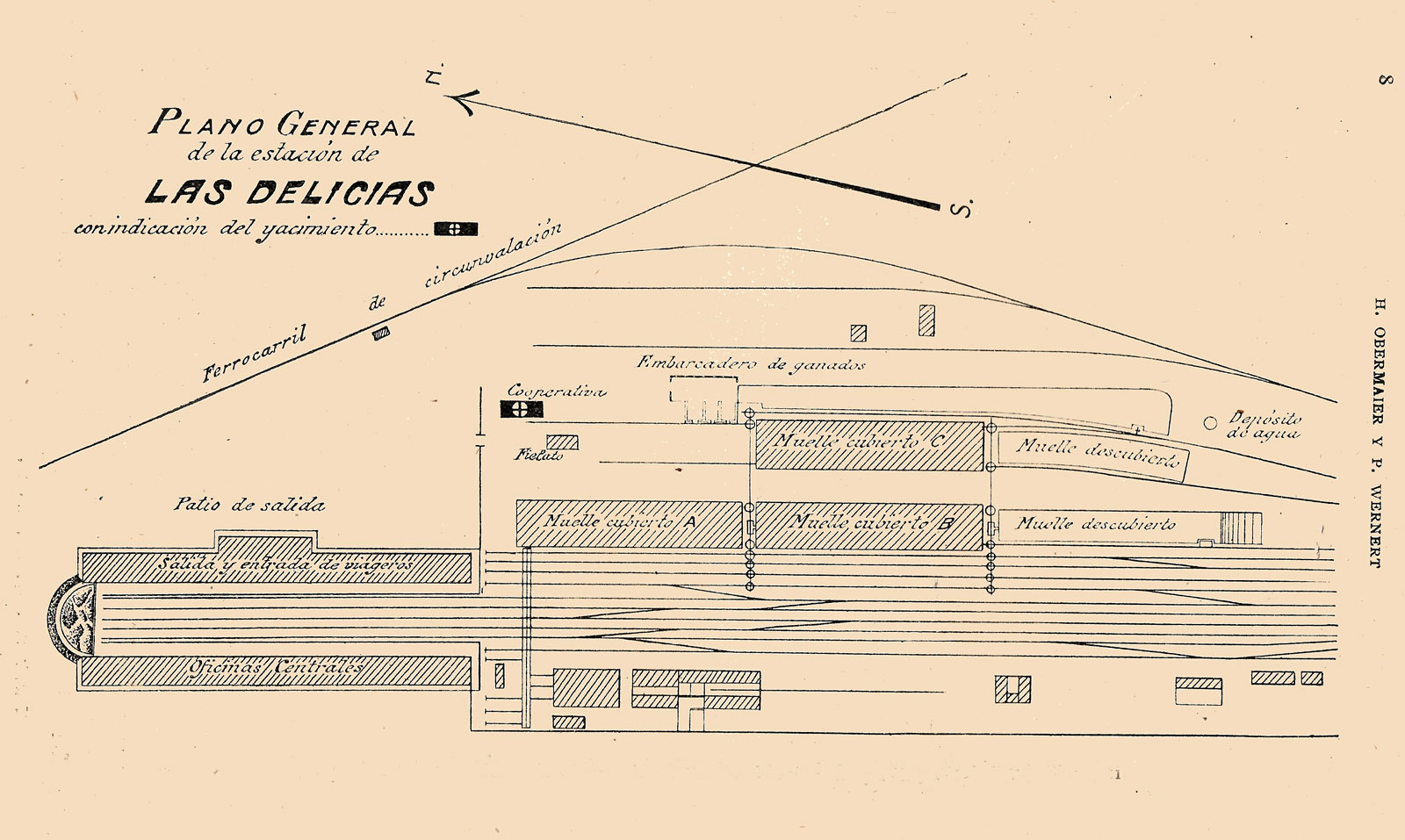
“Las Delicias” station plan with an indication of the Paleolithic excavation place. Colección A. Gutiérrez

